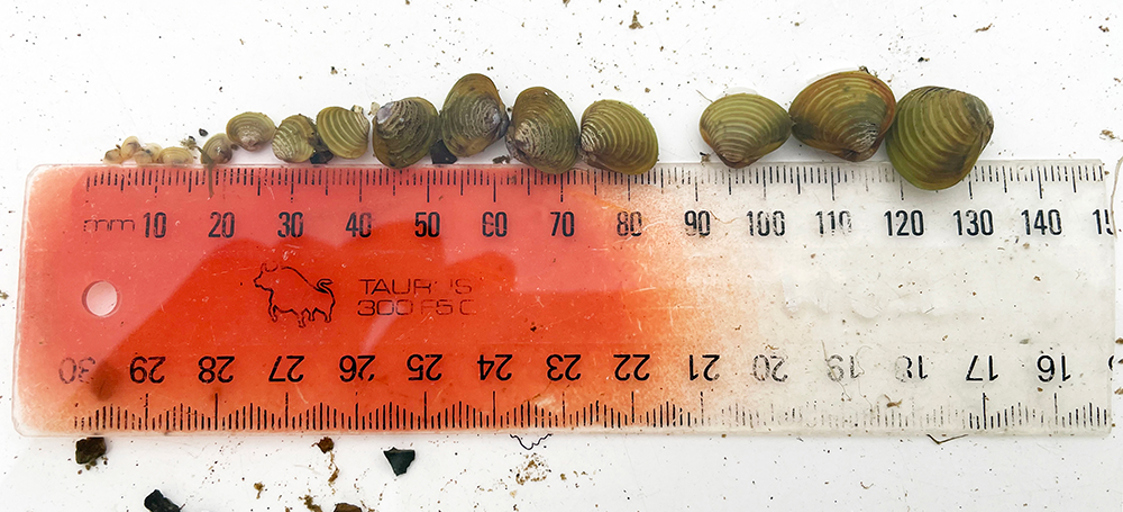Invasive freshwater clam (Corbicula fluminea)
A serious threat to Northland’s freshwater ecosystems
The invasive freshwater clam Corbicula fluminea, (previously known as the gold clam), is an invasive freshwater mollusc that poses a serious threat to New Zealand’s rivers, lakes, infrastructure, and native biodiversity.
First detected in the Waikato River in 2023, this species reproduces rapidly, able to produce up to 400 juveniles in a day. Invasive freshwater clams can spread easily through the movement of watercraft, trailers and equipment. It is now considered one of the most concerning aquatic pests in the country.
Early detection, containment, and strict biosecurity practices are essential to prevent its spread.
The invasive freshwater clam reproduces rapidly and in large numbers, able to produce 400 juveniles a day and up to 70,000 juveniles a year, allowing them to reach high densities in optimal conditions.
They are highly adaptable, and once introduced to a waterway, they are extremely difficult to manage. No country has successfully eradicated them. Exclusion of invasive freshwater clam from Northland and long-term containment to the Waikato river is the focus of management for this species.
Key concerns include:
- Ecological impact: Competes with native species like kākahi (freshwater mussels) for food and habitat, potentially displacing them.
- Water quality degradation: Can worsen nitrogen and phosphorus levels, disturb sediments, and reduce dissolved oxygen levels.
- Cultural and recreational loss: Threatens mahinga kai and the health of rivers used for swimming, boating, and fishing.
- Infrastructure damage: Dense populations can clog hydroelectric plants, irrigation systems, and water treatment facilities.
- No known eradication method: Overseas attempts have failed; long-term suppression and containment are the only viable options.
- Adult clams are 2–3 cm long, typically dirty white, yellow or tan, with a distinct ribbed shell texture.
- Found in lakes, and rivers down to where saltwater and freshwater mix
- Sitting on top of, or buried in sandy, gravel or muddy substrates.
See MPI’s factsheet for identification tips and photos.
Currently confirmed in:
- Waikato River – from Lake Maraetai to Port Waikato.
- Taupō Aqua Park – Corbicula australis detected in 2024.
Most of Aotearoa’s rivers and lakes are considered vulnerable. Surveillance is ongoing, but early detection is difficult due to its small size and ability to hide in sediment.
A coordinated national response is underway, involving:
- Biosecurity New Zealand, regional councils, iwi, and industry partners.
- Controlled Area Notices (CANs) in place for the Waikato River and Rotorua Te Arawa lakes.
- Long-term management plan developed to guide suppression, research, and public awareness.
- Suppression trials and habitat studies are informing future control strategies.
Follow Check, Clean, Dry protocols:
- Check: Remove visible clams, plant material, and mud.
- Clean: Wash gear, boats, trailers, and vehicles with tap water onto grass or gravel. Absorbent gear like lifejackets should be washed in hot tap water (50 – 55C) for a least 5 minutes to kill sticky juvenile clams, which can be too small to see.
- Dry: Ensure everything is completely dry, and leave for 48 hours before moving to another waterway.
- Do not move or disturb the clams
- Take a photo and note the location.
- Report it immediately to Biosecurity New Zealand:
- Call 0800 80 99 66
- Or use the online reporting form




